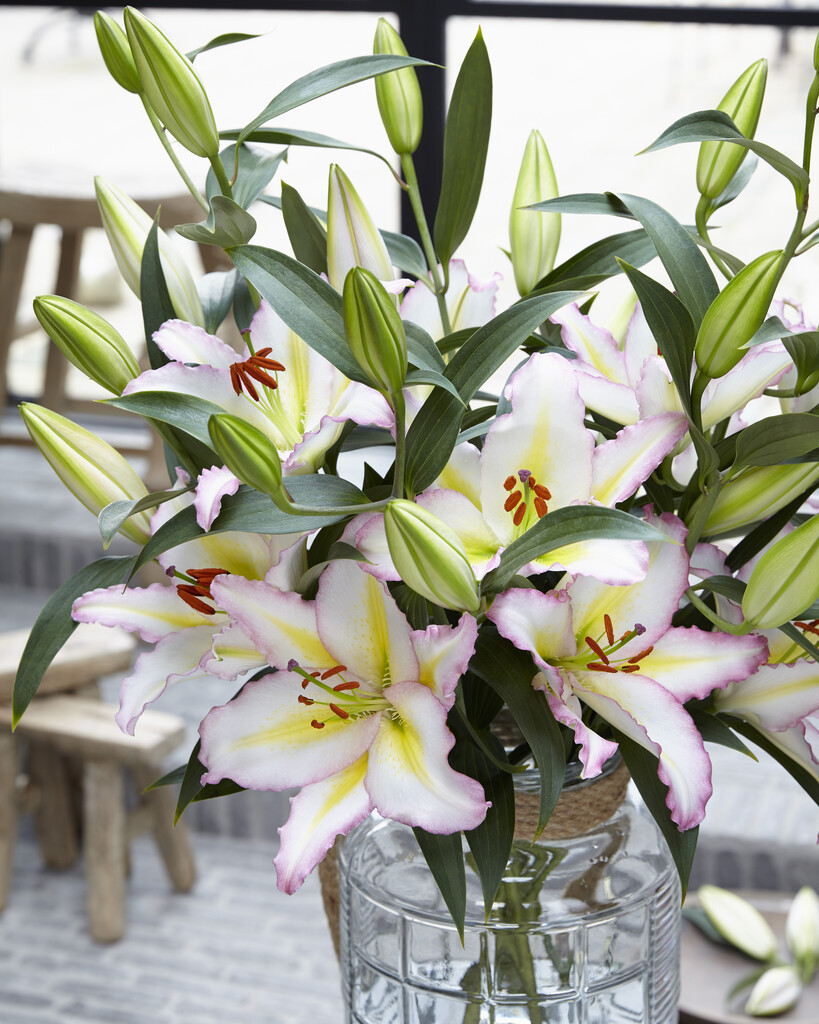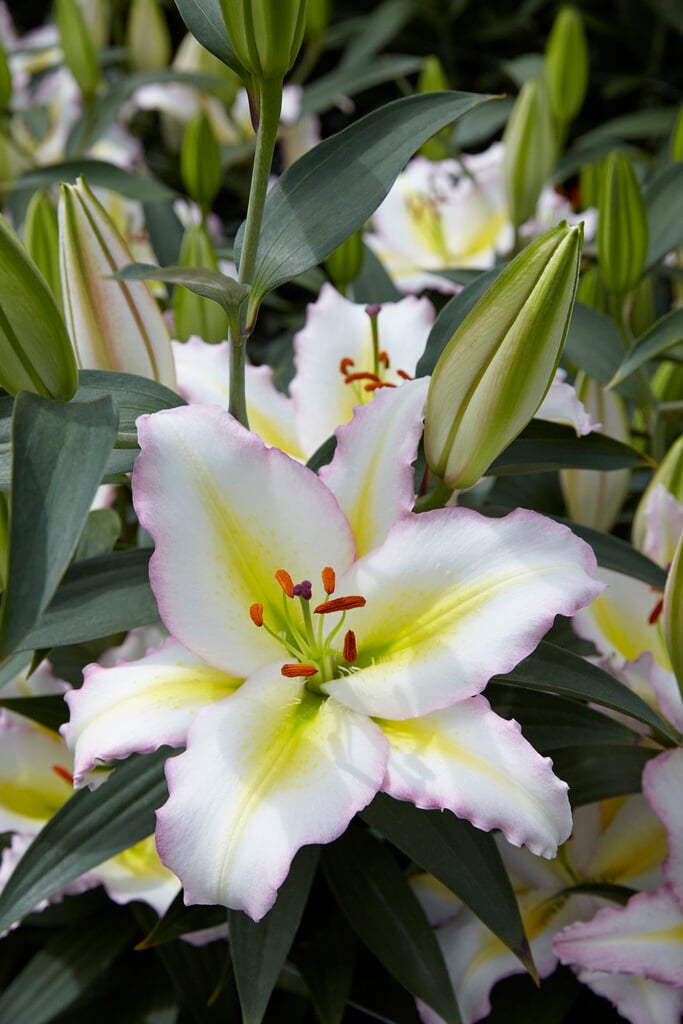Lilium 'Primrose Hill'
lily 'Primrose Hill'
A bulbous perennial producing strong, upright stems to a height of 1.2m clothed in shiny, dark green, lance-shaped leaves and topped in early summer with clusters of large, upward-facing, trumpet-shaped scented white flowers with yellow bars on the petals and edged in pale purple
Size
Ultimate height
1–1.5 metresTime to ultimate height
2–5 yearsUltimate spread
0.1–0.5 metresGrowing conditions
Moisture
Moist but well–drainedpH
Neutral, Alkaline, AcidColour & scent
| Stem | Flower | Foliage | Fruit | |
| Spring | Green | |||
|---|---|---|---|---|
| Summer | White Purple Yellow | Green | ||
| Autumn | Green | |||
| Winter |
Position
- Full sun
- Partial shade
Aspect
West–facing or South–facing or North–facing or East–facing
Exposure
Sheltered Hardiness
H6Botanical details
- Family
- Liliaceae
- Native to GB / Ireland
- No
- Foliage
- Deciduous
- Habit
- Columnar upright
- Potentially harmful
- Ornamental bulbs - not to be eaten. Wear gloves and other protective equipment when handling. TOXIC to pets if eaten (cats) - see the HTA guide to potentially harmful plants for further information and useful contact numbers
- Genus
Lilium are bulbous perennials with erect stems bearing whorled or spirally arranged leaves and terminal racemes or umbels of bowl-shaped, trumpet-shaped, funnel-shaped or turks cap shaped flowers, often fragrant, and white, yellow, orange or red
- Name status
Accepted
How to grow
Cultivation
Grow in well-drained soil enriched with leaf mould or well-rotted organic matter
Propagation
Propagate by division: detach offset bulblets when the leaves die down and plants become dormant
Suggested planting locations and garden types
- City and courtyard gardens
- Cottage and informal garden
- Patio and container plants
- Low Maintenance
- Cut flowers
- Flower borders and beds
- Underplanting of roses and shrubs
- Wall side borders
Pruning
No pruning required but deadheading will improve their appearance
Pests
May be susceptible to lily beetle, aphids, slugs, snails, Thrips, leatherjackets, and wireworms, and to damage by rabbits and voles; plants in containers may be susceptible to vine weevil
Diseases
May be susceptible to grey moulds, lily disease, other fungal diseases, and virus diseases; for more advice, see lily diseases
Get involved
The Royal Horticultural Society is the UK’s leading gardening charity. We aim to enrich everyone’s life through plants, and make the UK a greener and more beautiful place.

